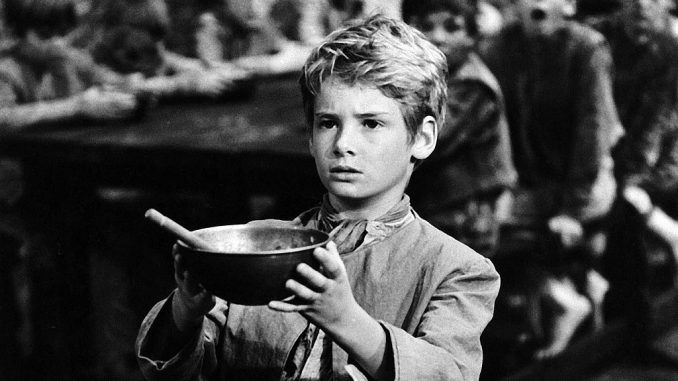
According to the latest National Health Service (NHS) figures, Victorian era diseases such as malnutrition, scurvy and gout are on the rise in Britain.
Poverty, diminished social services and junk food diets have been blamed for turning the clock back for some in modern Britain.
The upside could be that a responsible and properly represented government could win the next general election, and start to build the county again using Victorian-era ingenuity together with unique modern resources.

BYPASS THE CENSORS
Sign up to get unfiltered news delivered straight to your inbox.
You can unsubscribe any time. By subscribing you agree to our Terms of Use
The Week reports:
Compared to data collected in 2011, malnutrition numbers have risen by 50 per cent, with 7,366 people admitted to hospital with a malnutrition diagnosis between August 2014 and July this year, according to the latest NHS figures.
Less common diseases such as scurvy, cholera and scarlet fever have also seen a rise lately: from 82 scurvy cases in 2010/11 to 113 cases in 2014/15, and from nine cholera cases in 2010/2011 to 36 in 2014/15.
With 445 food banks in the UK and more than one million people now using them per year, health campaigners believe it is no wonder poverty-related diseases are coming back.
Speaking to The Independent, Diana Jeffrey, chair of the Malnutrition Task Force and charity Age UK, says: “Malnutrition is preventable, so it is totally unacceptable that estimates suggest there are at least one million older people malnourished or at risk of malnourishment. Cuts to social care mean many older people are being left to cope on their own.”
The worst-affected areas are Devon, Cornwall and the Isles of Scilly, where 2.4 people out of every 100,000 were diagnosed with malnutrition in 2014/2015. Similarly, gout patients have increased by 60.5 per cent, from 65,387 in 2010/2011 to 104,972 in 2014/2015.
Gout used to be a common affliction – Henry VIII famously had it – mostly associated with excess consumption of food and drink, which meant that the rich were more likely to suffer.
Now, with cheap junk food widely available and obesity rates ever higher, it is common among poor and rich alike.
Speaking to the Daily Telegraph, Tam Fry, from the National Obesity Forum, said the rise in gout figures “emphasises how ignorant people are in general about the consequences of overeating”.
The government is being urged to come up with a healthy strategy to tackle these issues, starting with backing down on the tax credits cuts, which campaigners say would entrench food insecurity for the poor.
Many have also called for a sugar tax, with Prof John Ashton, president of the Faculty of Public Health, saying the funds could be used to improve children’s health.
The Department of Health said: “There is no level of malnutrition that is acceptable – though these figures may well be in part due to better diagnosis and detection by our health staff and carers.”
It added that it was working on various projects and schemes to tackle the issue.


